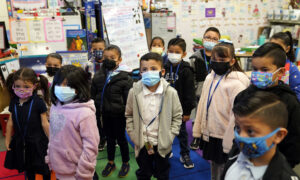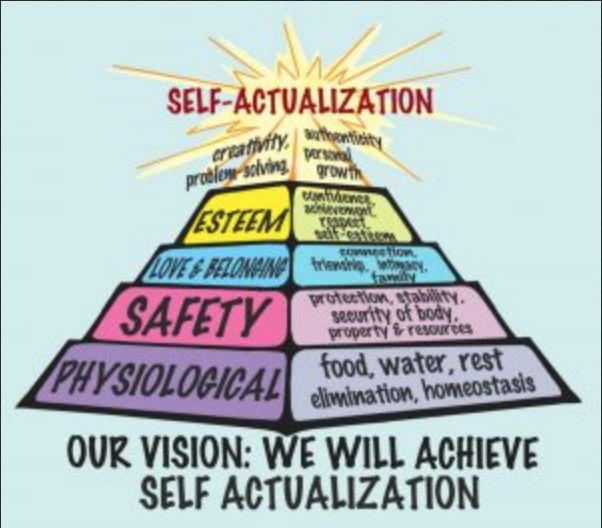California Community Schools Are Socialist
CommentaryUnder socialism, government is involved in everything: work, school, entertainment, even the home. That’s what California increasingly is becoming. Case in point: the “community schools” movement, which practically takes over all students’ lives, including that of their families. One such school actually is called the Social Justice Humanitas Academy, and is part of the Los Angeles Unified School District. “Social justice” is better termed “socialist justice.” Under its website’s Our Vision and Mission tab, the school explains, “Our mission is to achieve social justice through the development of the complete individual. In doing so, we increase our students’ social capital and their humanity while creating a school worthy of our own children.” That sounds an awfully lot like “The Socialist Program for Education” on the site of the Socialist Alternative, “Students would spend far more time outside the classroom than they do today and school buildings would become centers for the ongoing education and cultural development of the whole community.” It quoted the atheist communist Karl Marx, who said, “The partially developed individual, who is merely the bearer of one specialized social function, must be replaced by the totally developed individual”—according to socialist indoctrination, of course. A big problem with what the school calls educating “the complete individual” and what Marx called “the totally developed individual” is they leave out religion. Because U.S. Supreme Court rulings from the 1960s banned religion from the public schools, it cannot be introduced as part of what is “complete” or “totally developed.” As most families are religious, and religion still plays an enormous part in local communities in America, these programs inevitably would be biased against religion. The new school’s mission statement continues: “At Social Justice Humanitas Academy, our vision is: We will achieve self-actualization. The concept of self-actualization comes from Abraham Maslow, a leader in humanistic psychology, who understood a good life to be one in which an individual maximized their potential to become the very best version of who they are.” And here’s the actual values pyramid provided: This is just one of the latest fads the California education system has advanced at least since the 1960s. Although Maslow’s hierarchy would seem to make sense—everyone needs food, water, shelter, etc.—there are serious critiques of it, summarized by Pamela B. Rutledge in Psychology today: “As popular and widely applied as this model has been, however, insights from the use and adoption of social technologies like Facebook and Twitter, combined with increased knowledge about brains and networks, show that our understanding of Maslow’s model misses the mark in a very fundamental way. It doesn’t give enough credit to the role of social connection … “Needs are not hierarchical. Life is messier than that. Needs are, like most other things in nature, an interactive, dynamic system, but they are anchored in our ability to make social connections.” In a supposedly unbiased news article, the Los Angeles Times praised this new school model: “California is making a mega-bet—with an unprecedented $4.1 billion investment over seven years—that converting hundreds of campuses in high-poverty neighborhoods into schools like Humanitas offers the best chance to save children’s pandemic-damaged education and address entrenched inequities.” “This plan dramatically expands the traditional definition of a public school, overhauling campuses into neighborhood centers that seek to comprehensively meet the needs of students. Healthcare, mental health services, tutoring, pediatric care and other social supports converge on campus. Teachers and staff strive to make learning more culturally relevant and to foster a climate in which students have a sense of belonging and parents are a part of decision-making. “Community schools have lofty aspirations to topple barriers that prevent students from learning, such as hunger, anxiety and depression, racism and housing insecurity.” Note what’s missing in all this: rigorous academics. What really pulls kids out of poverty is achievement in the STEM fields: science, technology, engineering, and math. And as to what is “culturally relevant,” religion again is missing. Cultural education also ought to come not from ideological indoctrination, but good schooling in at least one foreign language, preferably two. When you learn a language, you learn the culture, including the ways it is different from American culture. Most of the kids in this school are Latinos. So they already have a head start in learning Spanish. Learning it properly in an academic setting—so they could read Spanish technical journals or converse with businesses in Latin America—would be immensely valuable. Those with the talent also could learn a second language, with Mandarin preferred. According to language train

Commentary
Under socialism, government is involved in everything: work, school, entertainment, even the home. That’s what California increasingly is becoming. Case in point: the “community schools” movement, which practically takes over all students’ lives, including that of their families.
One such school actually is called the Social Justice Humanitas Academy, and is part of the Los Angeles Unified School District. “Social justice” is better termed “socialist justice.”
Under its website’s Our Vision and Mission tab, the school explains, “Our mission is to achieve social justice through the development of the complete individual. In doing so, we increase our students’ social capital and their humanity while creating a school worthy of our own children.”
That sounds an awfully lot like “The Socialist Program for Education” on the site of the Socialist Alternative, “Students would spend far more time outside the classroom than they do today and school buildings would become centers for the ongoing education and cultural development of the whole community.”
It quoted the atheist communist Karl Marx, who said, “The partially developed individual, who is merely the bearer of one specialized social function, must be replaced by the totally developed individual”—according to socialist indoctrination, of course.
A big problem with what the school calls educating “the complete individual” and what Marx called “the totally developed individual” is they leave out religion. Because U.S. Supreme Court rulings from the 1960s banned religion from the public schools, it cannot be introduced as part of what is “complete” or “totally developed.” As most families are religious, and religion still plays an enormous part in local communities in America, these programs inevitably would be biased against religion.
The new school’s mission statement continues: “At Social Justice Humanitas Academy, our vision is: We will achieve self-actualization. The concept of self-actualization comes from Abraham Maslow, a leader in humanistic psychology, who understood a good life to be one in which an individual maximized their potential to become the very best version of who they are.”
And here’s the actual values pyramid provided:

This is just one of the latest fads the California education system has advanced at least since the 1960s. Although Maslow’s hierarchy would seem to make sense—everyone needs food, water, shelter, etc.—there are serious critiques of it, summarized by Pamela B. Rutledge in Psychology today: “As popular and widely applied as this model has been, however, insights from the use and adoption of social technologies like Facebook and Twitter, combined with increased knowledge about brains and networks, show that our understanding of Maslow’s model misses the mark in a very fundamental way. It doesn’t give enough credit to the role of social connection …
“Needs are not hierarchical. Life is messier than that. Needs are, like most other things in nature, an interactive, dynamic system, but they are anchored in our ability to make social connections.”
In a supposedly unbiased news article, the Los Angeles Times praised this new school model: “California is making a mega-bet—with an unprecedented $4.1 billion investment over seven years—that converting hundreds of campuses in high-poverty neighborhoods into schools like Humanitas offers the best chance to save children’s pandemic-damaged education and address entrenched inequities.”
“This plan dramatically expands the traditional definition of a public school, overhauling campuses into neighborhood centers that seek to comprehensively meet the needs of students. Healthcare, mental health services, tutoring, pediatric care and other social supports converge on campus. Teachers and staff strive to make learning more culturally relevant and to foster a climate in which students have a sense of belonging and parents are a part of decision-making.
“Community schools have lofty aspirations to topple barriers that prevent students from learning, such as hunger, anxiety and depression, racism and housing insecurity.”
Note what’s missing in all this: rigorous academics. What really pulls kids out of poverty is achievement in the STEM fields: science, technology, engineering, and math. And as to what is “culturally relevant,” religion again is missing.
Cultural education also ought to come not from ideological indoctrination, but good schooling in at least one foreign language, preferably two. When you learn a language, you learn the culture, including the ways it is different from American culture.
Most of the kids in this school are Latinos. So they already have a head start in learning Spanish. Learning it properly in an academic setting—so they could read Spanish technical journals or converse with businesses in Latin America—would be immensely valuable. Those with the talent also could learn a second language, with Mandarin preferred.
According to language training company Berlitz, here are the number of people speaking the four top world languages:
- English: 1.13 billion speakers;
- Mandarin: 1.12 billion speakers;
- Hindi: 615 million speakers;
- Spanish: 534 million speakers.
Combining English, Mandarin, and Spanish comes to 3.4 billion speakers, or nearly half the people on the planet. What a benefit knowing those languages would be in business or any field.
The new state budget spends $24,000 a year on each student. For that, the state easily could emphasize STEM and foreign languages and junk the politically correct time wasters. But it won’t.
A final point. Due to the $100 billion budget surplus, California now is going as wild as a lottery winner spending all that “free” money. Another example is continuing the high-speed rail boondoggle at a cost of another $3.65 billion.
These budgetary follies will end—or at least be reduced—when the surpluses evaporate in the next recession. But the missed opportunity to give these students real educations can never be made up.
Views expressed in this article are the opinions of the author and do not necessarily reflect the views of The Epoch Times.












